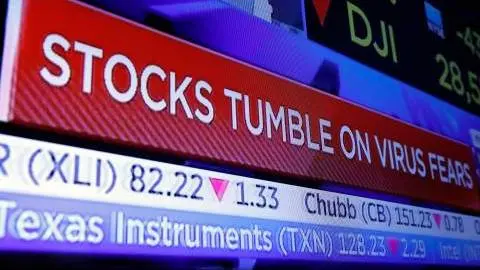UK: Rate cut coming as consumption risks build
Like everywhere else, there is a rising risk that the Covid-19 demand shock will cause a decrease in GDP in the second quarter. We expect the Bank of England to cut interest rates later this month, although the bigger focus for markets should be the forthcoming budget, which arguably offers greater scope to tackle the virus impact
Coronavirus supply shock risks morphing into demand issue
Since December’s election, the UK economy had been showing some tentative signs of life. Confidence had increased, and there were tentative signs that business activity was rising – albeit perhaps not quite to the same magnitude that some surveys had suggested.
But that’s now likely to change. As we’ve seen in other developed economies, supply chains have been disrupted by issues with sourcing Chinese-made components. Our trade team estimates that around 0.8% of UK output is reliant on value-added from China, although this is unsurprisingly higher for the electronics/electrical equipment industries at around 4%. While the former number may not sound too high, it masks the fact that subsequent parts of the production process may not be able to operate without overseas components. PMIs suggest there are increased delays for manufacturer deliveries.
Like the US, we estimate that roughly 20% of consumer spending is more exposed
The question now facing policymakers is how large the demand shock might be, now that the government is expecting a wider outbreak of the virus in the UK. Incoming Bank of England Governor Andrew Bailey said on Wednesday that “what we need frankly is more evidence than we have at the moment”, explaining perhaps why policymakers opted against joining the Federal Reserve in a coordinated rate cut.
Like the US, we estimate that roughly 20% of consumer spending is more exposed – things like restaurants/cafes (which make up 7%), hotels, transport, among other things. But unlike America, consumer activity has already been fragile for the past couple of years.
Consumer goods/services most exposed to virus impact

Admittedly confidence has recovered a little since the turn of the year, and real wage growth should be stronger this year, buoyed by a combination of lower regulated household energy bills and a tight jobs market.
However, the UK household savings ratio – currently 5.4% - is lower compared to historical standards, and has fallen over recent years, partly following the rise in import costs following the Brexit referendum. That’s quite a bit lower most international peers – the likes of France, Germany and the Netherlands have savings ratios comfortably above 10%.
There has also been a lot of focus in the media about the UK’s lower statutory sick pay levels. Employers are obliged to pay an amount equivalent to a little under 20% of the UK’s average salary if an employee is unwell – or in this case, self-isolating. Policies vary considerably across Europe, but according to an EU report, the rate of income replacement from sickness benefits/rules in the UK is one of the lowest. Sick pay also doesn't apply for self-employed workers, and in the UK has a slightly higher rate of self-employment than the EU average.
Fiscal and monetary action is coming
This all suggests risks to consumer spending, and we are pencilling in a contraction during the second quarter (although of course, this depends on how far the virus was to spread). To us, this suggests the Bank of England will cut rates by 25 basis points at its next meeting later in March. However, policymakers will be looking closely at the forthcoming budget, where there arguably will be greater scope to limit the economic fallout.
Like other central banks, BoE officials will be acutely aware that there is only so much their own policy announcements can do to solve what is more of a cash flow risk for firms, rather than a debt-serving issue for firms affected by the virus
Following the change in Chancellor, there was a lot of excitement among investors that the Treasury was poised to offer a large amount of fiscal stimulus. It is likely that the government will commit to substantially raise government investment over the coming years, but the Chancellor is much more constrained on day-to-day spending. A fiscal rule, which commits the government to balance current spending in two-to-three years offers very little headroom to lift spending without taxes – particularly given the extra costs associated with managing Covid-19.
The government has already announced it could expand its “Time to Pay” system, which allows struggling firms to pay back tax bills over a longer period of time in smaller instalments. Andrew Bailey also implied there was a joint Bank of England/Treasury programme in the works to give SMEs access to extra finance.
Like other central banks, BoE officials will be acutely aware that there is only so much their own policy announcements – which may also include some other credit easing measures – can do to solve what is more of a cash flow risk for firms, rather than a debt-serving issue for firms affected by the virus.
This publication has been prepared by ING solely for information purposes irrespective of a particular user's means, financial situation or investment objectives. The information does not constitute investment recommendation, and nor is it investment, legal or tax advice or an offer or solicitation to purchase or sell any financial instrument. Read more
Download
Download article
6 March 2020
March Economic Update - Coronavirus: The unknown and unprecedented risk This bundle contains 9 Articles